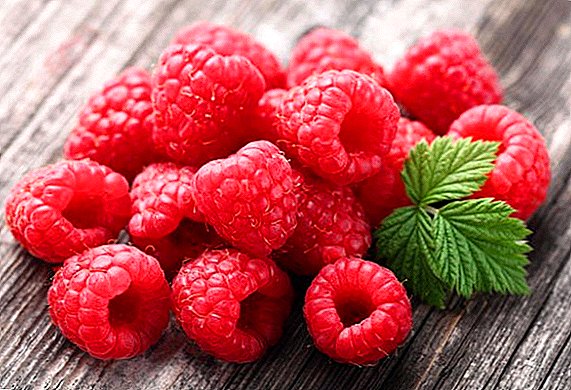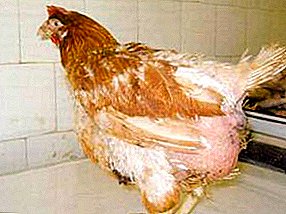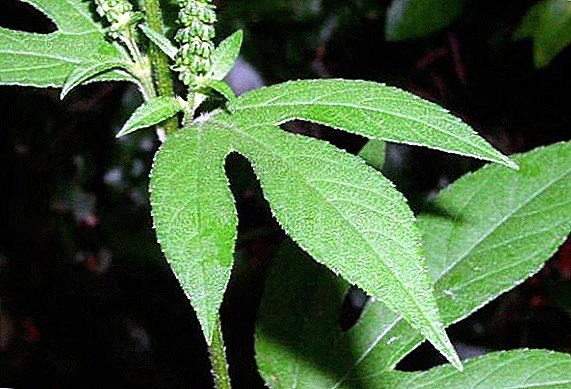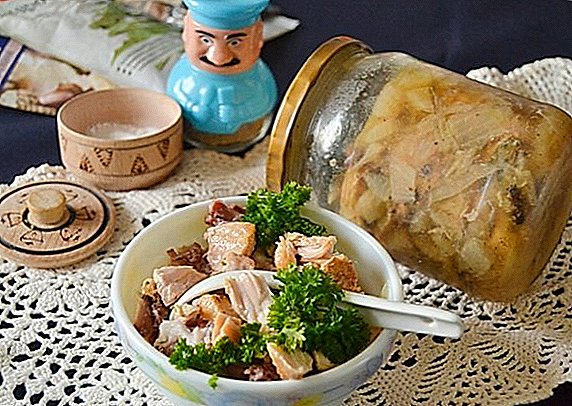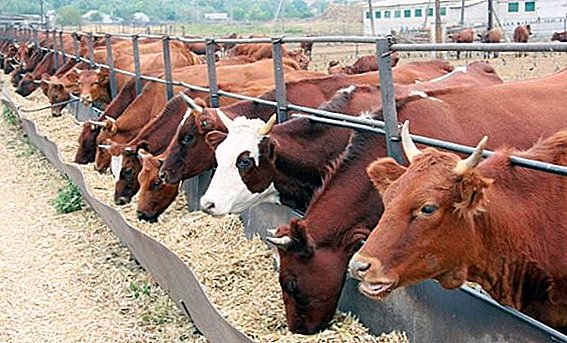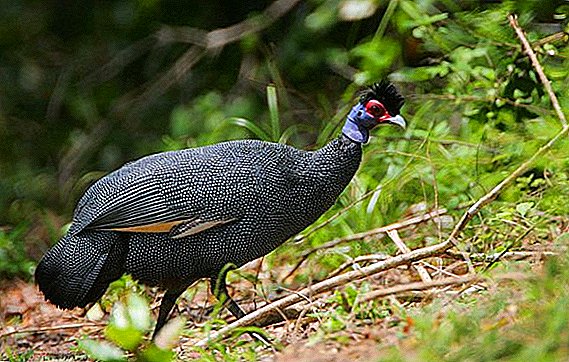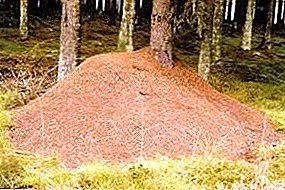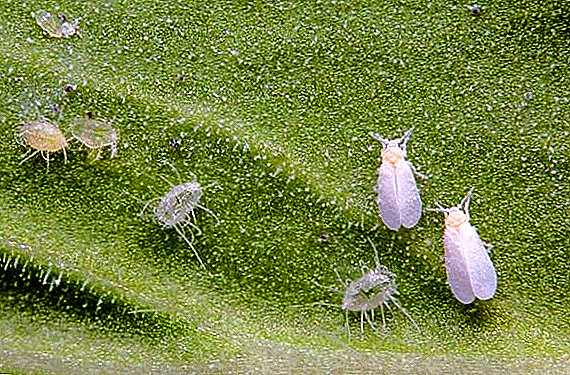 One of the most dangerous and voracious pests of plants is the whitefly. This little insect can cause tremendous harm, and we will tell you about the means to combat it and how to get rid of the whitefly in your home.
One of the most dangerous and voracious pests of plants is the whitefly. This little insect can cause tremendous harm, and we will tell you about the means to combat it and how to get rid of the whitefly in your home.
How to know the whitefly
Recognizing the whitefly is not so difficult. You may be caught by a white midge flying past you or sitting on flowers. In this case, you should immediately check all the plants under the leaves for its distribution. And sooner or later you will find a whole swarm of small midges sitting in your flower beds.
Insect sizes are very small - from 1.5 to 2 mm, sometimes reaching 3 mm. They look like small moliform insects, have four wings with a whitish bloom.
In houses and gardens appear mainly in the warm season, in wet weather. For them, the high air temperature of about +30 ° C is very important, and if the temperature drops below +10 ° C, all the vital processes of the whitefly stop, only the life of the larvae continues.
In the spring, when the temperature is still low, insects feel great in greenhouses and greenhouses, especially if their ventilation is very weak and the plants are planted close to each other. These are ideal conditions for the whitefly.
Did you know? Insects live on our planet for about 400 million years and are the most enduring creatures on earth. Even if humanity disappears for any reason, insects will definitely remain and prevail.The whitefly belongs to the Aleiroids (Aleyrodidae), and got its name due to the whitish powdery pollen, which covers the whole body and wings of the insect, from the Latin. Aleuron - "flour". In Europe, there are about 20 species of whitefly, and the most common are:
- tobacco, or cotton whitefly (Benisia tabaci G.) - came to us from Southeast Asia, harms vegetable, decorative, technical crops and prefers an air temperature of + 32-35 ° C;
- greenhouse or greenhouse whitefly (Tricleurodes vaporariorum W.) - prefers greenhouses, greenhouses and houses. Originally from South America, in warm time it spreads with the wind;
- citrus whitefly (Dialeurodes citri A.) - came to us from South Asia and prefers citrus and home plants;
- cabbage (Aleurodes brassicae) - likes to feast on vegetables, in particular cabbage, and amazes her in late summer, early autumn;
- strawberry (Aleurodes fragariae) - harms many vegetable crops, including strawberries.

Whitefly Harm
Whiteflies and their larvae feed on the juices of the plants on which they live, so it is important to notice this pest in time. They are also dangerous with their rapid reproduction - only three weeks are needed from the postponing of the larva to its transformation into an adult.
The greatest danger to plants is insect larvaewhich for the most part feed on sap and are weakly affected by any pesticides. As well as waste products of the pest, which appear on the leaves and stems in the form of a sticky shiny bloom called honeydew.
The whitefly is one of the most common and annoying pests of flowers along with aphids, spider mites, mealybugs, scutes, moths.
Over time, the transparent substance on the plants turns black and turns into a more dangerous black fungus. And if this fungus appeared, then the plant can be saved very difficult, and sometimes impossible. It directly affects the process of photosynthesis, and fungicides only suspend its action and can not completely destroy.  This midge is also a carrier of plant pathogens, such as chlorosis, leaf curl and many other phytopathogenic viruses.
This midge is also a carrier of plant pathogens, such as chlorosis, leaf curl and many other phytopathogenic viruses.
The most dangerous is the whitefly for such groups of plants:
1. From room prefers:
- orchids;
- balsam;
- geranium;
- begonia;
- fuchsia;
 2. Greenhouse:
2. Greenhouse:- cucumbers;
- tomatoes;
- eggplants;
- pepper;
- cabbage;
- beans.
- potatoes;
- strawberries;
- Strawberry;
- melons;
- apple trees;
- pears

Important! If the whitefly has not found its favorite delicacy in your house or garden, then it will choose any other one to taste, it may even move to another room, if there are flowers there.
Signs of plant damage by the whitefly
If you notice a whitefly somewhere, then shake the plants, and where they live, you will see a swarm of these midges, and by lifting the leaves, you will also see many translucent scales, which are larvae.
During infection, there is also a general depressed state of the plant and its wilting. Under the leaves and on them there is a considerable amount of white or transparent spots, which are sticky to the touch, - this is honeydew. Over time, the affected leaves curl, turn yellow and fall off. And if dark or brown spots have already appeared, this indicates neglect and oversight.
If you do not detect the whitefly in time, then, given its rapid reproduction, your plants can suffer very much from the damage.
How to deal with the whitefly
When the whitefly has already settled in a greenhouse or on houseplants, it is important to quickly navigate and find the right tools to properly fight, and in the end get rid of the annoying insect. And you should always start with prevention.
Preventive actions
- You need to choose only high-quality planting material from reliable suppliers.
- Planting should be quick.
- Greenhouses regularly air or install high-quality ventilation, as the midges do not tolerate temperature fluctuations.
- The ground can be slightly sprinkled with ash, insects in this place just do not live.
- It is necessary to regularly treat cultures with fortifying preparations that will help to cope with the attack of the pest more easily.
- From time to time houseplants need wet rubbing of leaves, and at the same time you can check for uninvited guests.
- In the greenhouses after harvesting is disinfected.
- In winter, the greenhouse is frozen, so that no pests survive.
- At what air temperature the whitefly dies, we indicated above (up to +10 ° C), therefore from time to time you take the affected plants to fresh air, but not below +5 ° C.
Did you know? If you ate a banana, then the chance to be bitten by a mosquito increases at times. They are very attracted to a person who smells like a banana.
Mechanical methods
One of the most well-known methods of catching adults is to hang yellow oilcloth-leaf traps over the plants, smeared with glue, which lure the midges with their appearance. You can also collect them by hand or wash them with soap and water from the leaves if the area is small, for example, on a home flower.
Fighting folk remedies
This insect is quite well adapted to different methods of struggle, because there are few popular methods. In the early stages of infection, you can try:
- medicinal dandelion, 50 g of the roots and 50 g of green leaves of which you need to chop, pour 1 l of water and insist 3-5 hours. Before spraying, strain and process 1 time in 7-14 days.
- infusion of garlic, which must be infused for at least four days. To do this, 100 g of finely chopped garlic pour 1 liter of water and insist. Before spraying, 5 g of this concentrated infusion is diluted with another liter of water and we process it.
- leaf treatment with soap solution using household or tar soap. Rub the soap, whisk with water until foam and carefully wipe the leaves with this mixture.
It is also worth mentioning the repellent plants that scare the whitefly with their scent. It is nasturtium, peppermint, thyme, wormwood.
Chemicals
Among the existing insecticides, Aktara, Konfidor, Fitoverm, Aktellik, Mospilan and a number of others that can be found on the market or in a specialized retail outlet performed best.
Important! Carefully read the recommendations for processing crops that are listed on each package of insecticides separately, and check the expiration date.The whitefly is a very harmful insect, but it can also be overcome by applying a systematic approach to the cultivation and care of plants.


